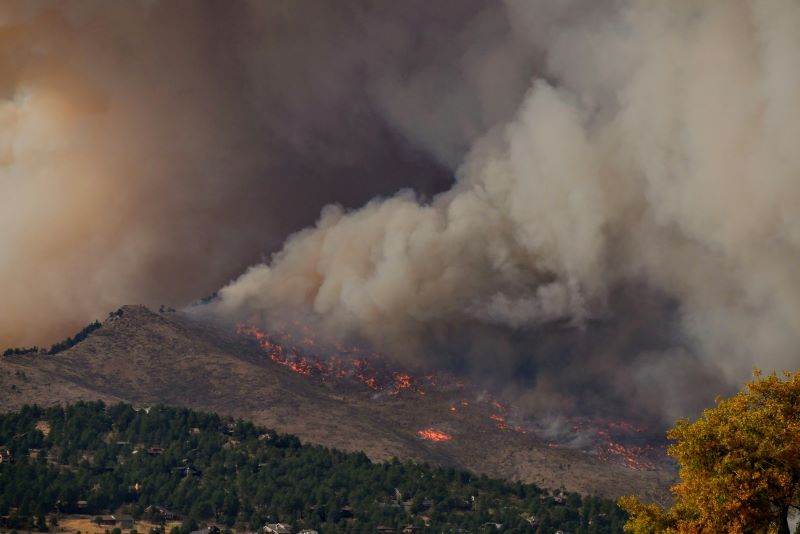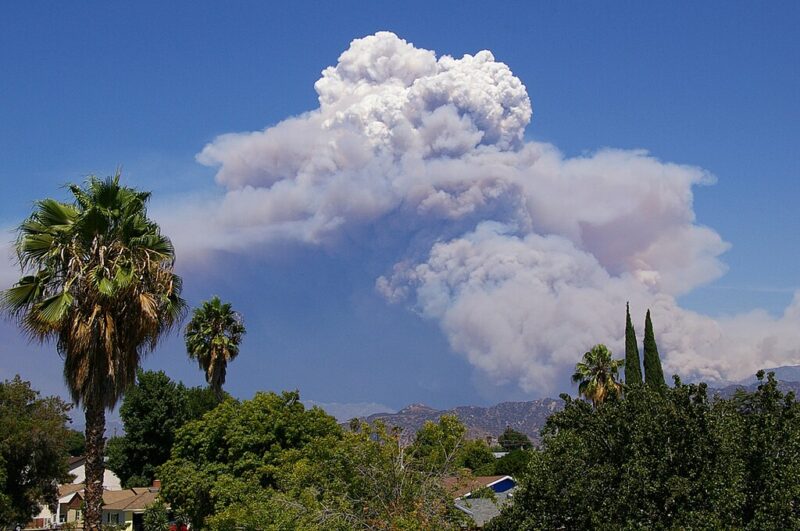
Wildfires and weather
Many studies have demonstrated links between global warming and longer and more active fire seasons. But a team of researchers from the University of California, Riverside, looked at a kind of reverse: how wildfires can influence local weather. On June 18, 2024, the researchers said large fires create hotter and drier weather than usual, resulting in a vicious loop of conditions favorable to more fire. Lead author James Gomez said:
It appears these fires are creating their own fire weather.
The researchers published their study in the peer-reviewed journal Atmospheric Chemistry and Physics on June 14, 2024.
Peak fire days
The researchers looked at peak fire days over the past 20 years. They mostly analyzed Northern California, which has had the most intense fires of that U.S. state thanks in part to dense vegetation. The researchers especially zeroed in on days with lower temperatures and higher humidity. Gomez said:
I looked at abnormally cool or wet days during fire season, both with and without fires. This mostly takes out the fire weather effects.
What they found was large fires made those days hotter and drier. And extra heat and arid conditions meant better conditions for more fire. Overall, temperatures were about 1 degree Celsius (1.8 F) warmer on fire days.

Clouds of black soot
When wildfires burn, they create pyrocumulus (or flammagenitus) clouds. These clouds contain lots of ash or dark soot, giving them a darker color than other clouds. And that darker color means they absorb sunlight more readily than traditional clouds. So, this soot traps heat. The trapped heat reduces humidity in the air, which makes it harder for other clouds – the kind that might bring rain – to form. These particles emitted by wildfires – largely black carbon – are absorptive aerosols.
Gomez said:
I wanted to learn how the weather is affected by aerosols emitted by wildfires as they’re burning.
And the discovery is that wildfires are limiting other clouds and the possibility of rain. Gomez said:
What I found is that the black carbon emitted from these California wildfires is not increasing the number of clouds. It’s hydrophobic.
The study also found that slower fire days had less of an effect on the weather. To combat large wildfires brining more fire weather, smaller, more frequent fires is one solution. Gomez said:
There is a buildup of vegetation here in California. We need to allow more frequent small fires to reduce the amount of fuel available to burn. With more forest management and more prescribed burns, we could have fewer giant fires. That is in our control.
Bottom line: Large wildfires create fire weather, resulting in a vicious loop. The fires create dark clouds of soot that increase temperatures and dry out the atmosphere.
Via University of California, Riverside
Read more: How wildfire smoke can harm your health, even from far away
Read more: This Is Wildfire: Tips on preparing yourself and your home
The post Large wildfires create fire weather: A vicious loop first appeared on EarthSky.
from EarthSky https://ift.tt/gw8FytE

Wildfires and weather
Many studies have demonstrated links between global warming and longer and more active fire seasons. But a team of researchers from the University of California, Riverside, looked at a kind of reverse: how wildfires can influence local weather. On June 18, 2024, the researchers said large fires create hotter and drier weather than usual, resulting in a vicious loop of conditions favorable to more fire. Lead author James Gomez said:
It appears these fires are creating their own fire weather.
The researchers published their study in the peer-reviewed journal Atmospheric Chemistry and Physics on June 14, 2024.
Peak fire days
The researchers looked at peak fire days over the past 20 years. They mostly analyzed Northern California, which has had the most intense fires of that U.S. state thanks in part to dense vegetation. The researchers especially zeroed in on days with lower temperatures and higher humidity. Gomez said:
I looked at abnormally cool or wet days during fire season, both with and without fires. This mostly takes out the fire weather effects.
What they found was large fires made those days hotter and drier. And extra heat and arid conditions meant better conditions for more fire. Overall, temperatures were about 1 degree Celsius (1.8 F) warmer on fire days.

Clouds of black soot
When wildfires burn, they create pyrocumulus (or flammagenitus) clouds. These clouds contain lots of ash or dark soot, giving them a darker color than other clouds. And that darker color means they absorb sunlight more readily than traditional clouds. So, this soot traps heat. The trapped heat reduces humidity in the air, which makes it harder for other clouds – the kind that might bring rain – to form. These particles emitted by wildfires – largely black carbon – are absorptive aerosols.
Gomez said:
I wanted to learn how the weather is affected by aerosols emitted by wildfires as they’re burning.
And the discovery is that wildfires are limiting other clouds and the possibility of rain. Gomez said:
What I found is that the black carbon emitted from these California wildfires is not increasing the number of clouds. It’s hydrophobic.
The study also found that slower fire days had less of an effect on the weather. To combat large wildfires brining more fire weather, smaller, more frequent fires is one solution. Gomez said:
There is a buildup of vegetation here in California. We need to allow more frequent small fires to reduce the amount of fuel available to burn. With more forest management and more prescribed burns, we could have fewer giant fires. That is in our control.
Bottom line: Large wildfires create fire weather, resulting in a vicious loop. The fires create dark clouds of soot that increase temperatures and dry out the atmosphere.
Via University of California, Riverside
Read more: How wildfire smoke can harm your health, even from far away
Read more: This Is Wildfire: Tips on preparing yourself and your home
The post Large wildfires create fire weather: A vicious loop first appeared on EarthSky.
from EarthSky https://ift.tt/gw8FytE

Aucun commentaire:
Enregistrer un commentaire